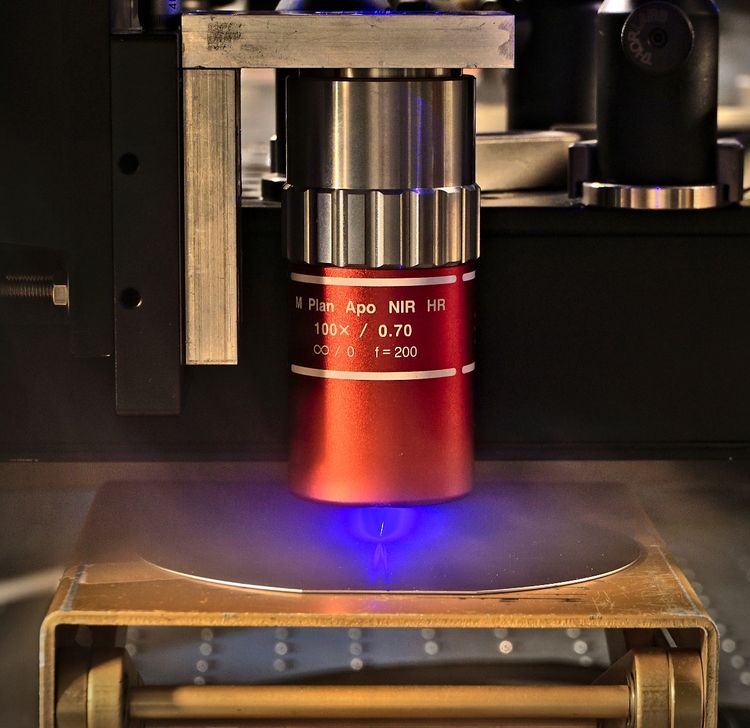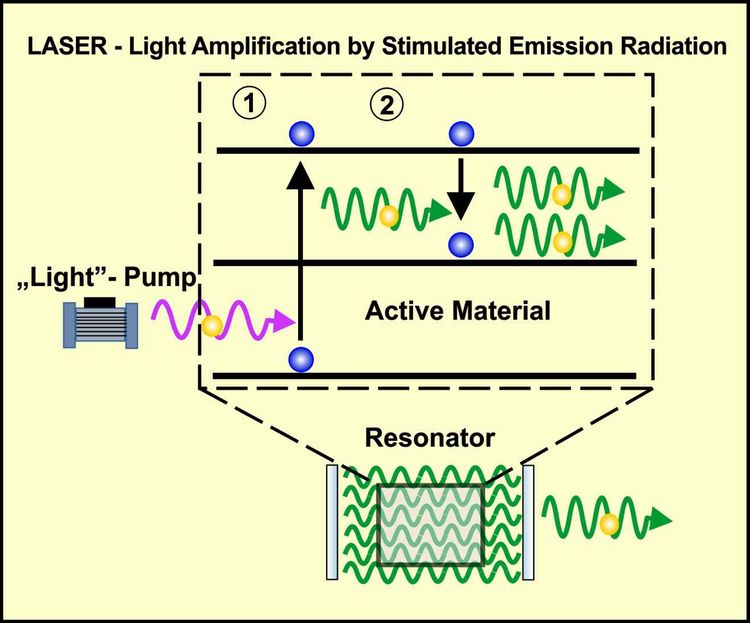On December 10th 2018, the official Nobel Prize ceremony took place in Stockholm, Sweden. Among the many awardees, there were three physicists, who have made ground-breaking contributions to the field of laser physics: Arthur Ashkin, Gérard Mourou and Donna Strickland. After the announcement on October, a vivid discussion about Donna Strickland being the third women physicist yet awarded with this prize arose. But only little has been said in detail about the physics behind the award.
The word laser is actually part of the everyday vocabulary. Many of us have probably held one of these things in our hands in the form of a laser pointer. Lasers have already settled in our everyday life with various applications that go beyond the laboratories, where science and development take place. The story of lasers has significantly altered the course of humanity. From Albert Einstein’s theoretical work on the possibility of amplified microwaves and light to the days of the Maser (microwave amplification by stimulated emission of radiation) pioneered by Charles Townes, Nicolay Basov and Alexandr Prokhorov and finally the fabrication of the first operating laser by Theodore Maiman in 1960 at the Hughes research laboratory it was a journey of almost four decades. So, how does a laser work?

The working principle of a laser
The word laser stands for “Light Amplification by Stimulated Emission Radiation” and was first used by Gordon Gould in the 1950s. The physical principle of a laser is explained by quantum mechanics. But we will try here to give a very basic and simplified picture of this.
For this, imagine that an atom has electrons that live in an apartment with three different stages: ground floor, first floor and second floor. We take a look at an electron sitting comfortably in the ground floor. The electron is said to be in the lowest energy state. In nature the lowest energy state is the most preferable one: We prefer to be relaxing than jumping around. The same is true for electrons. So, this electron is sitting comfortably and will not move unless it is excited or gets energy to do so. This additional energy can be given, for example, by light.
In the picture below there is a blue electron sitting in the ground floor of the apartment that receives additional energy from the violet light, which comes from a "light-pump". (Notice that we have drawn the light as a wave and a particle, because in a classical picture light is a wave, but in quantum mechanics light is also made of particles, called photons.) The electron thus receives energy and jumps up to the second floor (this is a state with higher energy, called an excited state). This process is called light absorption. The electron will then remain here for a certain amount of time (relaxation time), but it can also go down to the first floor and from there back to the ground floor. In order to push (or stimulate) the electron to move down to the first floor, we sent it the light with enough energy to push the electron to move down. While doing this, the electron loses the energy required to move down, shown as green light in the picture. This process is called light emission. The emitted light is of the same colour (energy) than the one that pushed him down.

So now we have two green light waves instead of one, meaning we have increased the amount of light coming out of the active material. At the same time, these two green light waves can further stimulate other excited electrons in the second floor to fall down and emit light, like a domino effect. The entire process is then repeated many times: the light-pump excites electrons from the ground floor into the second floor and will then be pushed by others to move down into the first floor and emit light. In order to help the amplification, the active material is put into a resonator made out of two mirrors that will let the emitted light reflect back and forth stimulating further light emission, while one of the mirrors lets part of the amplified light to come out.
In this way, a laser produces light with high intensity and a single colour, this means one energy and one wavelength, called monochromatic light. The colour of the light will depend on the active material we use: gas, solid-state, semiconductor, et cetera.
The Nobel Prize
The three Nobel laureates in physics from 2018 played some of the pivotal roles in extending the utilities of laser. Arthur Ashkin invented the optical tweezers – using the radiation pressure of the light of a laser, he demonstrated that such optical fingers are able to grab particles, atoms, viruses and bacteria! In fact in 1987, Ashkin managed to grab living bacteria with these laser based optical fingers and the bacteria escaped unharmed.
The other duo of the Nobel Prize winners, Gérard Mourou and Donna Strickland paved the way towards the shortest and most intense laser pulses ever created by mankind. It was the doctoral thesis of Strickland under the supervision of her thesis advisor Mourou that laid the actual foundation of the technique they termed chirped pulse amplification, that henceforth became the basis for realization of many high intensity laser beams.

Lasers as part of our daily life
Lasers vary in their size, power, emission frequency and applications. The family of lasers can be listed into various categories based on their active medium, operational wavelengths and their applications. As of today, thousands of kinds of lasers are known, even though majority of them are used only for specialized scientific and technical research. While the success of gas based lasers has been in medical applications, the semiconductor lasers based on gallium nitride, indium-gallium nitride, gallium arsenide, indium phosphides, and more recently, silicon and germanium, have played the lead role in the fields of telecommunication, holography, automobile industry and the wide range of DVD and Blu-ray disc players. In this respect, our research group is actively engaged in the studies and development of future tuneable semiconductor lasers based on nitrides.
Lasers have since been used for making our lives better. From medical uses to telecommunications, from entertainment to academics and cutting edge scientific research – lasers continue to be a major player. Lasers as potential weapons in warfare including nuclear arsenals and missile technology have been a cause of concern. However, the future technology of quantum communications and quantum teleportation, both based on lasers, would only help humans to explore hitherto unexplored domains. Although, with great power comes greater responsibilities. So, a responsible use of the explored science and technology will surely propel us to greater heights. (Andrea Navarro-Quezada, Rajdeep Adhikari, 12.2.2019)
German version of this article
Links
More articles in this blog